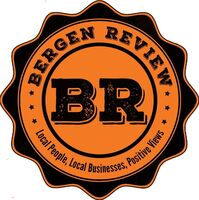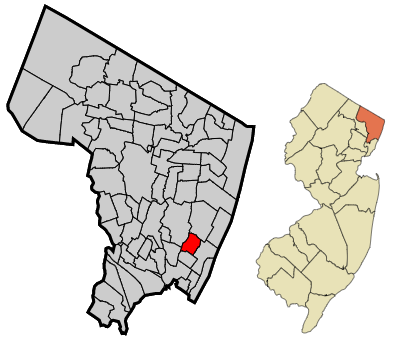borough of |
|
Vertical Divider
A brief history of LeoniaLeonia was formed as the result of a referendum passed on December 5, 1894, from portions of Ridgefield Township. The borough was formed during the "Boroughitis" phenomenon then sweeping through Bergen County, in which 26 boroughs were formed in the county in 1894 alone. Portions of Leonia were taken on February 19, 1895, to form the Township of Teaneck.
New Jersey Monthly magazine ranked Leonia as its 31st best place to live in its 2008 rankings of the "Best Places To Live" in New Jersey. The original inhabitants of Leonia were the Hackensack tribe (Ashkineshacky) of Native Americans. The population was about 1,000 before the Europeans settled in the area. At the time of the American Revolutionary War, Leonia was known as part of the English Neighborhood, a name that survives in neighboring Englewood. It was settled in 1668 mainly by Dutch and English farmers, making it one of the oldest communities in the state and county. A third of the population was African slaves. It was located on the western slope of the Palisades, and started as a quiet farming community. Leonia's proximity to New York City and its major universities, theaters and performing venues contributed to Leonia's place in the world of art and academics, with many artists and leading thinkers finding a home there in the twentieth century. The local economy that had been focused on agriculture underwent economic and cultural growth during the late nineteenth century, marked by the introduction of train service at was originally called West Fort Lee. J. Vreeland Moore and other town leaders chose the name "Leonia" in 1865 in honor of American Revolutionary War General Charles Lee, for whom Fort Lee was named. After traveling through Leonia upon arriving in New Jersey by ferry at Edgewater in 1899, advertising executive Artemus Ward purchased a large piece of land and established the Leonia Heights Land Company to develop and market housing in the community. His advertising attracted many academics and artists who were drawn to Leonia's small size, culture, and location, earning the town's nickname of the "Athens of New Jersey". In 1915, the Leonia School of Illustration was established by Harvey Dunn, fostering the artists' colony that subsequently emerged over the next decade.[29] By the 1930s, it had the highest number of residents, per capita, in Who's Who in America and 80% of its residents were college graduates. Transportation through the borough was enhanced with access to ferries and trolley systems and Leonia became a refuge for many of America's most creative thinkers which included five Nobel Prize winners. For 200 years, one of the two major avenues that run north-to-south through Leonia, Grand Avenue (the other one is Broad Avenue) was called the English Neighborhood Road. In colonial times, this road served as the main inland route between Paulus Hook, Bergen, and the English Neighborhood. Leonia was a crossroads of the American Revolution and a training ground for American Civil War soldiers. Historic places in the town include the Civil War Drill Hall and Armory and the Cole-Allaire House, constructed around 1765, making it the oldest dwelling in the borough, and placed on the National Register of Historic Places in 1976. The Vreeland House, constructed in 1786 by Dirck Vreeland and expanded in 1815, was added to the National Register of Historic Places in 1978. Leonia celebrates "Leonia Day" annually on the third Sunday in May GeographyAccording to the United States Census Bureau, the borough had a total area of 1.635 square miles (4.234 km2), including 1.536 square miles (3.977 km2) of land and 0.099 square miles (0.257 km2) of water (6.06%).
While the borough center's elevation is 115 feet (35 m), the western part of the borough can reach 5 feet (1.5 m) and the eastern part of Leonia reaches 318 feet (97 m). The borough borders the Bergen County municipalities of Englewood, Fort Lee, Palisades Park, Ridgefield Park and Teaneck. Leonia is designated as a Tree City USA, receiving its 21st annual recognition in 2010 from the National Arbor Day Foundation. Education
Leonia is served by its public system and by a number of private schools. The Leonia Public Schools serve students from pre-kindergarten through twelfth grade. As of the 2015-16 school year, the district and its three schools had an enrollment of 1,844 students and 165.6 classroom teachers (on an FTE basis), for a student–teacher ratio of 11.1:1. Schools in the district (with 2015-16 enrollment data from the National Center for Education Statistics) are Anna C. Scott Elementary School (647 students; in grades PreK-5), Leonia Middle School(511; 6-8) and Leonia High School (688; 9-12). Students from Edgewater attend the district's schools for grades 7-12 as part of a sending/receiving relationship with the Edgewater Public Schools. Public school students from the borough, and all of Bergen County, are eligible to attend the secondary education programs offered by the Bergen County Technical Schools, which include the Bergen County Academies in Hackensack, and the Bergen Tech campus in Teterboro or Paramus. The district offers programs on a shared-time or full-time basis, with admission based on a selective application process and tuition covered by the student's home school district. St. John the Evangelist School was a Catholic school for students in grades PreK-8, operating under the supervision of the Roman Catholic Archdiocese of Newark. After 72 years and generations of graduates, it was closed in June 2013. |
Leonia Restaurants
Longtime Italian place with classic dishes & brick-oven pizza in a strip-mall setting.
|
2018 US Census Bureau, American Community Survey. Home value data includes all types of owner-occupied housing.















